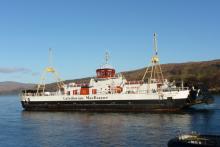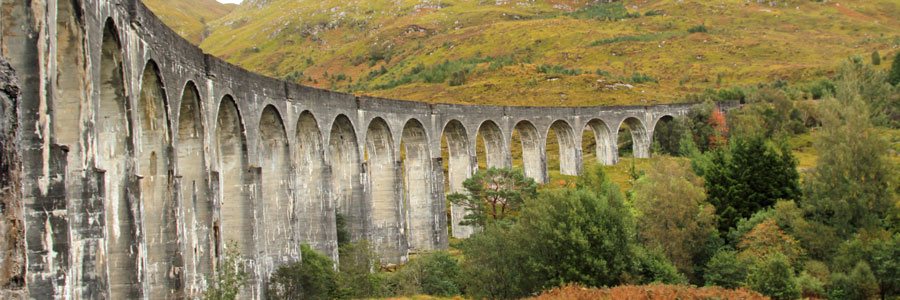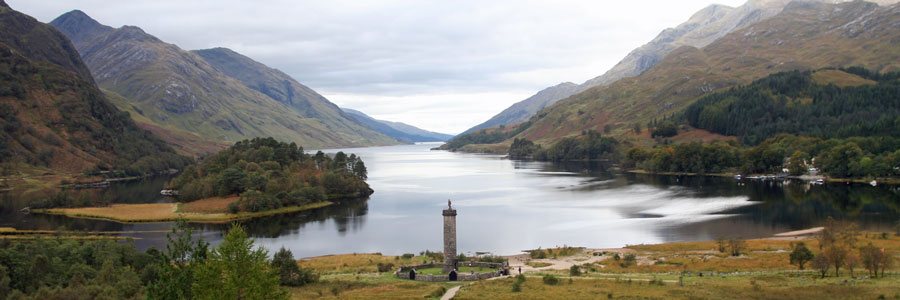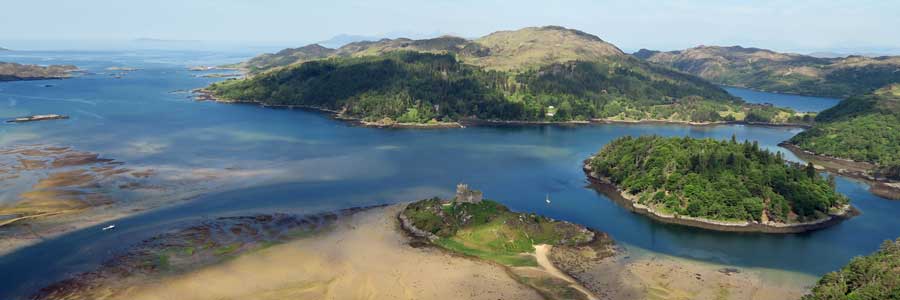Morvern
 Morvern is approximately 200 square miles, with Ardnamurchan to the north-west, Sunart and Ardgour to the north, and bounded by the Sound of Mull to the south, Loch Linnhe to the east and Loch Sunart to the north. Morvern is a stunning and dramatic region with a geology and topography that reflect a turbulent volcanic history. The gentle ‘trap topography’ of the basaltic lava flows in the west contrasts with the more rugged coastal hills of metamorphic rocks (schists and psammites) to the east, and the igneous granites further eastward still. There are also some small exposures of Triassic sandstones and Jurassic limestones, as well as minor intrusions of both acidic and basic nature. The vegetation is mainly upland grassland, acidic heathland and bog, interspersed with areas of forestry plantation of mainly Sikta spruce, larch and Lodgepole pine. There are also some lovely sections of coastal mixed deciduous woodland around Lochaline, Glencripesdale, Innimore and in other sheltered glens and gullies. There are some lovely hazel dominated woodlands at Drimlin and elsewhere. Special Area of Conservation status has been awarded to Morvern Woods (encompassing five deciduous woodlands in Morvern).
Morvern is approximately 200 square miles, with Ardnamurchan to the north-west, Sunart and Ardgour to the north, and bounded by the Sound of Mull to the south, Loch Linnhe to the east and Loch Sunart to the north. Morvern is a stunning and dramatic region with a geology and topography that reflect a turbulent volcanic history. The gentle ‘trap topography’ of the basaltic lava flows in the west contrasts with the more rugged coastal hills of metamorphic rocks (schists and psammites) to the east, and the igneous granites further eastward still. There are also some small exposures of Triassic sandstones and Jurassic limestones, as well as minor intrusions of both acidic and basic nature. The vegetation is mainly upland grassland, acidic heathland and bog, interspersed with areas of forestry plantation of mainly Sikta spruce, larch and Lodgepole pine. There are also some lovely sections of coastal mixed deciduous woodland around Lochaline, Glencripesdale, Innimore and in other sheltered glens and gullies. There are some lovely hazel dominated woodlands at Drimlin and elsewhere. Special Area of Conservation status has been awarded to Morvern Woods (encompassing five deciduous woodlands in Morvern).
 The main settlement in Morvern is Lochaline, which also serves as a ferry terminal to Fishnish on Mull.
The main settlement in Morvern is Lochaline, which also serves as a ferry terminal to Fishnish on Mull.
Lochaline supports a pier side café, a general store, a post office, a pub, a hotel, a petrol station, a medical centre, a primary school, a church, a craft shop and a social club. There is also a Dive Centre and an award winning restaurant (The White House Restaurant), as well the Lochaline Sand Mine and a community forest nearby. There is also an anchorage facility at Lochaline Harbour.
Both the WhiteHouse Restaurant (Ardtornish Estate) and Boathouse (Kingairloch Estate) , offer the opportunity to experience some fine seasonal cuisine from locally sourced and sustainable produce- well worth a visit.
 There are a number of short forestry walks within Morvern, including a walk around the deserted township of Aoineadh Mor the Ghardail Loop. Other lovely walks in the area include Kinlochaline Low Road and walks in the Rahoy Hills; part of which is a Scottish Wildlife Trust Nature Reserve. There is also a lovely coastal walk to a ruined castle, Ardtornish Castle. For hill walks in the area, please refer to the Morvern Undiscovered website.
There are a number of short forestry walks within Morvern, including a walk around the deserted township of Aoineadh Mor the Ghardail Loop. Other lovely walks in the area include Kinlochaline Low Road and walks in the Rahoy Hills; part of which is a Scottish Wildlife Trust Nature Reserve. There is also a lovely coastal walk to a ruined castle, Ardtornish Castle. For hill walks in the area, please refer to the Morvern Undiscovered website.
The 13th century castle was built by the descendents of the 12th century warrior, Somerland, who vanquished the Vikings in an epic battle in Morvern. His descendents became the MacDonald Lord of the Isles.
 Morvern also a great place for fossil hunting in the Jurassic shales near Lochaline; please leave any finds for others to enjoy.
Morvern also a great place for fossil hunting in the Jurassic shales near Lochaline; please leave any finds for others to enjoy.
There are also a number of great cycle routes, for example in Fiunary Forest and Glencripesdale Forest. You can also cycle along the old road from Lochaline to Kinlochaline (3km) and to Old Ardtornish Castle from Ardtornish Gardens (6km). There is also a 11km route from Drimlin to Doirlinn. Details of these cycles rides can be found on the Sunart Oakwoods website.
Ardtornish Garden, a 25 acre gardens, with fine coastal views and stunning displays Spring and Autumn, is also well worth a visit.
Morvern supports many of the iconic species of the West Highlands including golden eagle, white-tailed eagle, pine marten, otter and wildcat.
The extensive coastline of Morvern also makes it a good place to enjoy water sports, such as canoeing, kayaking, diving and sailing.
 There is a good selection of holiday accommodation in Morvern, ranging from self catering cottages to estate properties.
There is a good selection of holiday accommodation in Morvern, ranging from self catering cottages to estate properties.
Morvern has a great sense of community and the Morvern Heritage Society was set up to promote the cultural, archaeological, cultural and natural heritage of Morvern. See Morvern Undiscovered for further information about the region.
Morvern is a great place to immerse yourself in the beauty of this wild, remote landscape. It is a place to enjoy some great scenery, wildlife and lovely walks on the mainland, as well as being within easy reach of the Isle of Mull.









